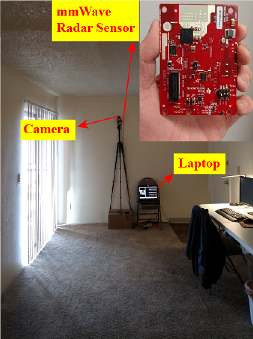mmFall: Fall Detection using 4D MmWave Radar and a Hybrid Variational RNN AutoEncoder
In this paper we propose mmFall - a novel fall detection system, which comprises of (i) the emerging millimeter-wave (mmWave) radar sensor to collect the human body's point cloud along with the body centroid, and (ii) a variational recurrent autoencoder (VRAE) to compute the anomaly level of the body motion based on the acquired point cloud. A fall is claimed to have occurred when the spike in anomaly level and the drop in centroid height occur simultaneously. The mmWave radar sensor provides several advantages, such as privacycompliance and high-sensitivity to motion, over the traditional sensing modalities. However, (i) randomness in radar point cloud data and (ii) difficulties in fall collection/labeling in the traditional supervised fall detection approaches are the two main challenges. To overcome the randomness in radar data, the proposed VRAE uses variational inference, a probabilistic approach rather than the traditional deterministic approach, to infer the posterior probability of the body's latent motion state at each frame, followed by a recurrent neural network (RNN) to learn the temporal features of the motion over multiple frames. Moreover, to circumvent the difficulties in fall data collection/labeling, the VRAE is built upon an autoencoder architecture in a semi-supervised approach, and trained on only normal activities of daily living (ADL) such that in the inference stage the VRAE will generate a spike in the anomaly level once an abnormal motion, such as fall, occurs. During the experiment, we implemented the VRAE along with two other baselines, and tested on the dataset collected in an apartment. The receiver operating characteristic (ROC) curve indicates that our proposed model outperforms the other two baselines, and achieves 98% detection out of 50 falls at the expense of just 2 false alarms.
PDF Abstract
